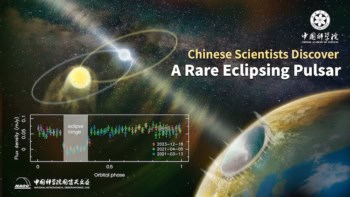
A “bright narrow ribbon snaking its way through the sky” is just one of the puzzling features of the first all-sky maps of the edge of the solar system made by NASA’s Interstellar Boundary Explorer (IBEX) – according to one of the scientists working on the project.
Launched one year ago into very high altitude Earth orbit, IBEX has been busy measuring how ions in the solar wind interact with the plasma from interstellar space. IBEX will tell us more about the shape of the solar system’s protective “bubble” – called the heliosphere – which is created by the solar wind and shields us from harmful galactic cosmic rays.
‘Truly remarkable’
“The IBEX results are truly remarkable, with emissions not resembling any of the current theories or models of this never-before-seen region,” said David McComas of the Southwest Research Institute and IBEX principal investigator. “We expected to see small, gradual spatial variations at the interstellar boundary,” he explained.
The ribbon is the source of intense emissions of energetic neutral atoms (ENAs), which IBEX specializes in detecting. Its presence appears to be at odds with the current model of the heliosphere, which scientists believed is shaped like a comet by the collision of the outgoing solar wind and the galactic wind, which blows outside the heliosphere.
Origins a mystery
According to McComas, the ribbon seems to be full of charged particles, which seem to have been concentrated along its length – but how they got there is a mystery.
IBEX data suggest the alignment of the ribbon is related to the local interstellar magnetic field, which could mean that its origins lie outside of the solar system. The ribbon also appears to have a fine structure, suggesting that the ion concentrations vary along its length.
The results are published in a series of five papers in Science



